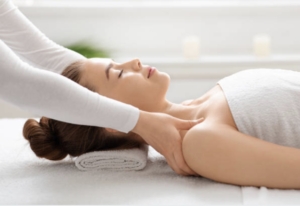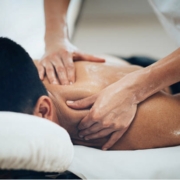Car Accidents in Edmonton: Everything You Need to Know
Whiplash: The Symptoms You Need to Know
Whiplash is an injury that occurs when your body is suddenly forced backward and forward. It’s the most common injury that happens during car accidents in Edmonton, and it’s one of the leading causes of chronic neck and back pain. While a little fender bender may not seem like a big deal, new research has shown that even small accidents can result in significant injuries.
The violent forces that occur during an auto accident can cause damage to your spinal discs, ligaments, tendons, and bones-even at “low” speeds. Most of these injuries happen because your head is whipped backward and forward very quickly. This rapid back and forth motion frequently results in ligament tearing and spinal disc injuries. Symptoms such as neck pain, back pain, headaches, confusion, and even depression indicate that you’ve suffered a whiplash injury. Because of a spike in adrenaline at the time of the accident, you may not immediately notice any immediate pain. For many people, these symptoms may take hours or even a few days to develop after the initial shock of the car accident wears off.
- Whiplash is an acceleration-deceleration injury that can affect your ligaments, spinal discs, muscles, and facet joints.
- There is often a period of little to no pain before the symptoms become worse.
- Symptoms of whiplash include neck or back pain, headache, radiating pain, confusion, and difficulty sleeping.
It’s smart to get a complete evaluation after car accidents in Edmonton to minimize your risk of long-term pain. Getting the right care at the right time can make a big difference in your ability to heal quickly and avoid long-term chronic pain. Remember, even small accidents can cause injuries, so if you’ve been involved in an auto accident, be sure to reach out to our office as soon as possible so we can help you get on the relief road. How Long Does Whiplash Last?
Symptoms of whiplash include neck pain, back pain, headaches, dizziness, or confusion—none of these sound like a good time. So if you’ve been involved in a car accident, you may be wondering how long these symptoms are going to last. The good news is that with a proper evaluation and early treatment, you have a high likelihood of getting well within a matter of weeks.
Why it Matters:
One of the most common injuries associated with whiplash is ligament tearing. Ligaments are short, tough bands of connective tissue that hold together the bones in your neck and joints of your body. If these liga- ments are torn, it can cause neck pain. The average time it takes a ligament to heal is about six weeks with the proper care and treatment. If you notice symptoms like headaches, dizziness, or memory issues, you may have suffered a mild traumatic brain injury (mTBI). A majority of people with a mild TBI recover within three months.
- Whiplash injuries frequently cause tearing of the ligaments that support proper spinal motion and stability.
- The acute inflammatory phase of injury last up to 72 hours, the repair phase takes up to 6 weeks, and the remodeling phase of healing can last up to a year.
- A non healed ligament injury can result in osteoarthritis.
After car accidents in Edmonton, the most important step you can take is to receive a full evaluation. Only after a complete evaluation will you be able to know what type of injuries you’ve sustained, and most importantly- how to get well. You would be surprised at how many people shrug off a “small” accident and push their symptoms aside. While that may save you a little time today, it’s likely to result in much more pain down the road.
Shoulder Pain After a Car Accident: What does it mean?
You may be surprised to learn that shoulder injuries are some of the most common challenges after a car accident, in addition to whiplash. If you are the driver and have your hands on the wheels at the time of the crash, the sudden force created by the accident can lead to a torn rotator cuff. Your shoulder is one of the most complex parts of your body and is made up of a collection of bones, ligaments, tendons, and muscles.
Why it Matters:
The rotator cuff is a ball and socket joint made up of three bones: your arm bone (the humerus), your shoul- der blade (the scapula), and your collarbone (the clavicle). The supporting muscles, ligaments, and tendons are designed to help you lift and rotate your arm. Your shoulder is one of the most dynamic and unstable joints in your body. It’s hard to ignore a torn rotator cuff because…it hurts! Signs of a tear include shoulder pain when lifting your arm, weakness, pain when lying down, or a limited range of motion.
- Shoulder impingement has been estimated to occur in up to 10% of people involved in car accidents.
- The shoulder is one of the most complex, dynamic, and unstable joints in the body, with a complex network of bones, ligaments, and muscles.
- The risk of neck or shoulder pain seven years after a collision was three times higher for patients with initial whiplash injuries than those without.
Ignoring a shoulder injury after car accidents in Edmonton is not a good idea. Your shoulder is designed to move, and if you try to “let it heal” by not moving it, then you’re putting yourself at risk for a frozen shoulder. Frozen shoulder, or adhesive capsulitis, is when your shoulder develops adhesions due to lack of movement. This can result in severe pain that takes months to heal. If you have shoulder pain after an accident, time is of the essence! Our team is here and can provide a complete evaluation and treatment plan for you to get moving safely and heal quickly.
Finding Relief After a Car Accident in Edmonton
Screech. Bam. Uh-oh. You’ve been involved in a car accident. Your day has been thrown upside down, and a million thoughts are racing through your head. If you don’t feel immediate pain, you may be tempted to think you don’t have a problem. But waiting too long to seek care has been shown to increase the chances that you’ll need more aggressive interventions. Taking the right action steps as quickly as possible after a car accident can make a huge difference in your overall health and healing. With the stress of an accident, calling the insurance company, getting a car repaired, etc., it’s not uncommon for people to make the mistake of putting their health and wellbeing last on the to-do list.
Why it Matters:
The problem is that the longer you wait to get evaluated and receive care, the higher your likelihood becomes of needing more aggressive medical care. Without a proper diagnosis and treatment, your body may begin to “heal” with more scar tissue than necessary. You may also try to live “around” your injuries, which can cause additional stress and compensation on other parts of your body and lead to additional injuries. Research has shown that active care involving range of motion, mobilizing exercises, and strengthening can effectively reduce pain. To give yourself the best chance to find relief without the
need for drugs or surgery, we recommend three simple steps. The three steps to finding relief after car accidents in Edmonton:
- Get an evaluation: A full evaluation can provide you with an accurate diagnosis and treatment plan.
- Begin receiving care: After reducing inflammation, movement-based techniques are often recommended to help you regain your quality of life.
- Stay consistent: Getting well is a process. Stay consistent with your care to heal as quickly as possible.
Next Steps:
There’s no way around it- auto accidents aren’t fun. But with the right healthcare team, most people can get back to their full life and activities without the need for drugs or surgery. The key is to follow the three steps of evaluation, care, and consistency. While it seems simple, following the three steps will give you the best chance to get well quickly and stay well for years to come.
Looking for care following a car accident. Check out ocwc.ca for more info on our clinic.
Science Sources:
The Association Between a Motor Vehicle Collision and Future Neck Pain. Eur Spine J. 2010. Whiplash. WebMD. 2021.
The Treatment of Neck Pain and Whiplash-Associated Disorders. JMPT. 2016. The Impact of Musculoskeletal Injuries Sustained in Traffic Crashes. BMC. 2018.










